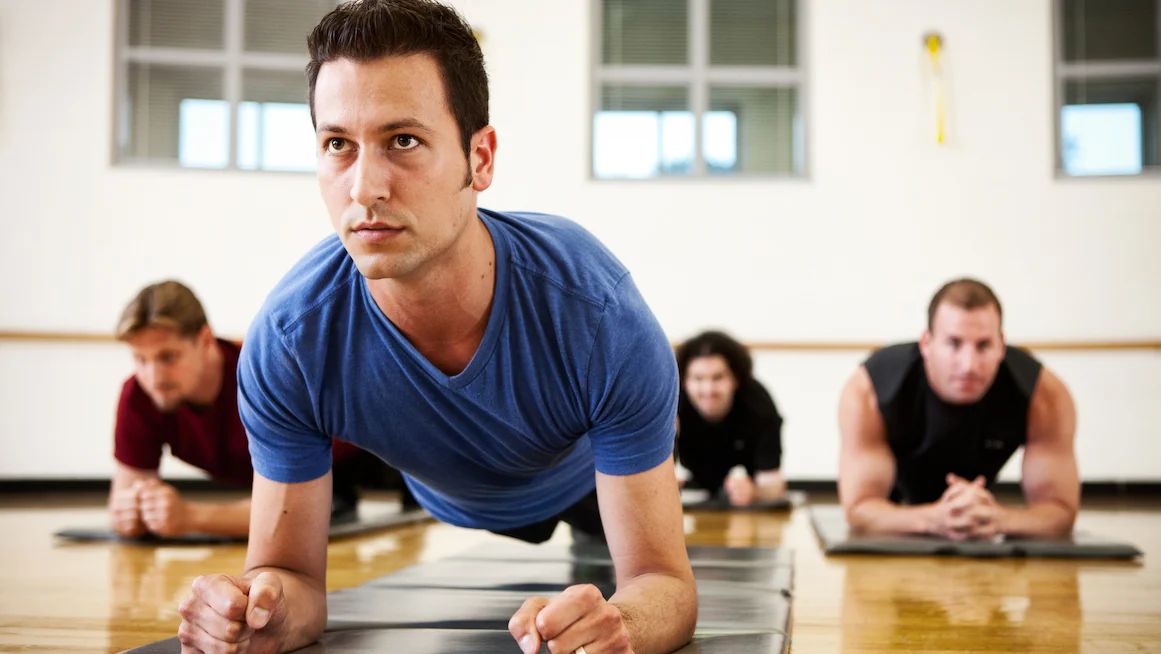In a world where fitness trends come and go, and where “health” is often equated with outward appearances, it’s essential to pause and ask: What does good Physical Health really mean? Is it the absence of illness, the ability to run a marathon, or simply feeling good in our bodies?
Good Physical Health is a holistic state of well-being that encompasses far more than muscle mass, body weight, or flexibility. Physical Health is a dynamic equilibrium in which your body functions optimally and supports a high quality of life. Strong Physical Health enables you to perform daily activities with ease, maintain steady energy levels, prevent diseases, and live longer with minimal physical limitations.
This article explores the true meaning of Physical Health, the essential components that define it, how Physical Health can be measured, and practical strategies to achieve and maintain lifelong Physical Health.
Key Takeaways
- Good physical health is the optimal functioning of all body systems, allowing you to perform daily activities with ease and resist disease.
- It includes cardiovascular fitness, muscular strength, flexibility, body composition, and nutritional balance.
- Mental health, stress, and sleep are deeply intertwined with physical health.
- Regular exercise, healthy eating, hydration, and quality sleep are fundamental to maintaining health.
- Physical health can be pursued and maintained at any age, regardless of medical conditions or fitness level.
- Start with small, sustainable changes for long-term results.
- Seek regular medical checkups and listen to your body’s signals.
The Core Components of Physical Health
1. Cardiovascular Health
Your cardiovascular system—comprising the heart, blood vessels, and blood—is a core pillar of Physical Health. It powers every cell in your body by pumping oxygen-rich blood and vital nutrients to tissues while removing waste products. This efficient circulation is essential for optimal organ function and is central to maintaining strong Physical Health.
Why It Matters
Maintaining cardiovascular health is fundamental to long-term Physical Health. It reduces the risk of heart disease, stroke, hypertension, and other chronic conditions. A strong heart and flexible blood vessels are key components of overall vitality, endurance, and longevity—all markers of good Physical Health.
Key Indicators of Cardiovascular Physical Health
- Blood Pressure: Ideally around 120/80 mmHg. Healthy blood pressure levels are critical for protecting your heart and arteries, which directly impacts your Physical Health.
- Cholesterol Levels: Balanced LDL (bad cholesterol) and HDL (good cholesterol) levels support artery function and reduce plaque buildup, promoting cardiovascular Physical Health.
- Heart Rate Variability (HRV): A higher HRV reflects a resilient, adaptable cardiovascular and nervous system, and is a powerful marker of strong Physical Health.
Practices to Support Cardiovascular Health
- Aerobic Exercise: Engage in at least 150 minutes per week of moderate-intensity activities such as brisk walking, running, swimming, or cycling. Aerobic workouts strengthen the heart muscle, improve circulation, and increase lung capacity.
- Balanced Diet: Consume heart-healthy foods rich in omega-3 fatty acids (found in fish, flaxseeds), fiber (whole grains, fruits, vegetables), and antioxidants.
- Maintain Healthy Weight: Excess weight increases heart strain and blood pressure.
- Avoid Smoking: Smoking damages blood vessels and increases cardiovascular risk.
- Manage Stress: Chronic stress can elevate blood pressure and heart rate. Incorporate relaxation techniques like meditation and deep breathing.
- Regular Checkups: Monitor blood pressure, cholesterol, and blood sugar levels to catch potential issues early.
2. Muscular Strength and Endurance
Muscles do much more than help you lift heavy objects—they are fundamental for everyday movements, maintaining good posture, preventing injuries, and supporting your metabolism.
Understanding Strength vs. Endurance
- Strength is your muscles’ ability to exert maximum force in a short burst (like lifting a heavy box or doing a push-up).
- Endurance is the ability of your muscles to sustain repeated contractions or maintain effort over an extended period (like climbing stairs, walking long distances, or holding a plank).
Both are essential for functional fitness, enabling you to perform daily activities efficiently and with less fatigue.
Benefits of Strong Muscles
- Improved Mobility and Balance: Reduces the risk of falls and injuries.
- Supports Bone Health: Resistance training increases bone density, lowering osteoporosis risk.
- Enhances Metabolic Rate: More muscle mass helps burn more calories even at rest.
- Better Posture: Strong core and back muscles prevent slouching and chronic pain.
Practices to Build Strength and Endurance
- Resistance Training: Use free weights, machines, resistance bands, or bodyweight exercises like squats, push-ups, lunges, and planks at least two days per week.
- Functional Fitness: Focus on movements that mimic everyday activities—lifting, pulling, pushing, bending—to enhance overall performance.
- Progressive Overload: Gradually increase the weight, reps, or difficulty to continually challenge your muscles and stimulate growth.
- Rest and Recovery: Allow 48 hours between intense strength sessions for muscle repair and growth.
- Mix It Up: Combine strength-focused days with endurance-oriented activities like circuit training or high-rep sets to boost muscle stamina.
3. Flexibility and Mobility
Flexibility is the ability of your muscles and connective tissues to stretch through a full range of motion, while mobility combines flexibility with the strength and control needed to move joints freely and efficiently.
Why It’s Important
Good flexibility and mobility are essential for healthy movement patterns, injury prevention, and maintaining independence as you age. They help your body perform everyday activities smoothly—whether reaching overhead, bending down, or twisting.
Benefits
- Reduces Injury Risk: Flexible muscles and mobile joints are less prone to strains, sprains, and overuse injuries.
- Improves Posture: Balanced muscle length prevents imbalances that lead to poor alignment and pain.
- Supports Joint Health: Maintains lubrication and nourishment of cartilage by promoting movement.
- Enhances Performance: Better mobility allows for improved technique and efficiency in sports and exercise.
Effective Practices
- Yoga: Combines static and dynamic stretches with strength and balance, enhancing overall mobility.
- Stretching Routines: Incorporate both:
- Static stretching (holding a stretch for 20–30 seconds) post-workout to lengthen muscles.
- Dynamic stretching (controlled movement through a joint’s range) as part of warm-ups to prepare muscles.
4. Body Composition
Body composition describes the percentages of fat, muscle, bone, and other tissues that make up your body weight. It’s a more meaningful indicator of health than weight alone because it distinguishes between fat mass and lean mass (muscle, bones, organs).
Why It Matters
A healthy body composition supports overall physical function, reduces the risk of chronic diseases, and improves metabolism and energy levels.
- Lower Visceral Fat: Fat stored around internal organs (visceral fat) is linked to higher risks of heart disease, diabetes, and inflammation.
- Adequate Lean Mass: Sufficient muscle mass is critical for strength, mobility, and metabolic health.
How Body Composition Is Measured
- Body Mass Index (BMI): A simple ratio of weight to height. While easy to use, BMI doesn’t differentiate fat from muscle, so it can be misleading, especially for athletes.
- Waist-to-Hip Ratio (WHR): Measures fat distribution; a higher ratio indicates more abdominal fat and increased health risk.
- Advanced Methods: Techniques like DEXA (dual-energy X-ray absorptiometry), bioelectrical impedance, or skinfold calipers provide more accurate breakdowns of fat, muscle, and bone mass.
Focus Areas to Improve Body Composition
- Maintain Healthy Weight: Focus on a weight that aligns with your height, age, and body type, emphasizing fat loss rather than just weight loss.
- Build and Preserve Muscle Mass: Strength training is key to maintaining lean mass as you age.
- Healthy Diet: Combine adequate protein intake with balanced nutrition to support muscle repair and fat metabolism.
- Consistent Physical Activity: Both cardio and resistance exercises help manage fat levels and boost metabolic health.
- Monitor Progress: Use multiple methods to track changes over time, focusing on how you feel and perform rather than just the scale.
5. Nutritional Health

Nutrition is the foundation of physical health. The food and fluids you consume directly influence your energy levels, muscle growth, immune function, and overall well-being.
Why Nutrition Matters
Your body relies on nutrients to repair tissues, produce enzymes and hormones, fight infections, and maintain cellular function. Poor nutrition can lead to fatigue, weakened immunity, and increased risk of chronic diseases.
Key Goals
- Balanced Macronutrients:
- Carbohydrates: Your primary energy source. Choose complex carbs like whole grains, fruits, and vegetables for sustained energy.
- Proteins: Essential for muscle repair and immune health. Include lean meats, fish, legumes, dairy, and plant-based proteins.
- Fats: Important for brain health, hormone production, and cell integrity. Focus on healthy fats such as those in avocados, nuts, seeds, and olive oil.
- Adequate Micronutrients: Vitamins and minerals (like vitamin C, vitamin D, calcium, and iron) support numerous bodily functions. Eating a variety of colorful whole foods ensures a good micronutrient intake.
- Hydration: Water is crucial for digestion, temperature regulation, joint lubrication, and toxin elimination. Aim for 8–10 cups daily, adjusting for activity and climate.
Healthy Habits
- Eat Whole Foods: Prioritize natural, minimally processed foods to maximize nutrient intake and avoid additives.
- Limit Processed and Sugary Foods: These often contain empty calories, unhealthy fats, and excess sodium that can impair health.
- Mindful Eating: Pay attention to hunger and fullness cues, eat slowly, and savor your meals.
- Plan Meals: Preparing meals ahead reduces reliance on fast food and helps maintain balanced nutrition.
- Moderate Portions: Avoid overeating by controlling portion sizes and balancing plate components.
6. Sleep and Recovery
Sleep is the body’s natural reset button. It allows your muscles to repair, your brain to consolidate memories, and your immune system to strengthen. Without adequate rest, physical performance and overall health decline.
Why Sleep Matters
- Muscle Repair & Growth: During deep sleep stages, your body releases growth hormones that repair tissues and build muscle.
- Cognitive Function: Quality sleep enhances focus, decision-making, memory, and mood regulation.
- Immune Support: Sleep strengthens your body’s defenses against infections.
- Hormone Balance: Proper rest helps regulate hormones related to appetite, stress, and metabolism.
Recommended Sleep
Adults should aim for 7–9 hours of uninterrupted, high-quality sleep each night. Consistency in sleep timing also supports your circadian rhythm, improving sleep quality.
Tips to Improve Sleep and Recovery
- Create a Consistent Routine: Go to bed and wake up at the same time daily—even on weekends.
- Limit Screen Time: Avoid screens at least 1 hour before bed to reduce blue light exposure, which disrupts melatonin production.
- Optimize Your Sleep Environment: Keep your bedroom dark, quiet, and cool. Use blackout curtains and earplugs if needed.
- Avoid Stimulants: Limit caffeine and heavy meals close to bedtime.
- Relaxation Techniques: Practice calming activities such as meditation, deep breathing, or gentle stretching before sleep.
7. Functional Movement
Good physical health isn’t just about strength or endurance—it’s also about moving efficiently and pain-free during everyday activities. Functional movement refers to your body’s ability to perform common tasks safely and effectively.
Why Functional Movement Matters
Everyday activities like climbing stairs, bending to pick something up, carrying groceries, or walking long distances rely on coordinated muscle groups, joint mobility, balance, and core stability. Poor functional movement can lead to discomfort, injury, or loss of independence.
Examples of Functional Movements
- Climbing stairs without fatigue or joint pain
- Bending and lifting objects safely
- Walking or standing for extended periods
- Reaching overhead or behind with ease
How to Enhance Functional Movement
- Core Training: A strong core stabilizes your spine and pelvis, improving balance and reducing injury risk. Incorporate planks, bridges, and rotational exercises.
- Physical Therapy: If you have movement limitations or pain, consulting a physical therapist can help identify issues and design corrective exercises.
- Regular Movement Assessments: Periodically evaluate your mobility, balance, and strength to catch and address problems early.
- Incorporate Movement Throughout the Day: Avoid prolonged sitting by standing, stretching, or walking every hour.
The Psychological Link to Physical Health
Physical health is inseparably linked to mental and emotional well-being. Chronic stress, depression, and anxiety can suppress immune function, affect sleep quality, and reduce motivation for healthy behaviors.
Key Areas of Connection:
- Stress and cortisol: Long-term elevation can lead to weight gain and cardiovascular issues.
- Depression: Often linked to physical inactivity and poor eating habits.
- Mindfulness: Practices like meditation and deep breathing aid in recovery and hormonal regulation.
Measuring Physical Health
Unlike a fixed grade on a test, physical health can be evaluated in various ways, and it’s highly individualized. Some common methods include:
- Vital signs: Blood pressure, resting heart rate, respiratory rate.
- Laboratory tests: Blood sugar, cholesterol, vitamin levels.
- Fitness tests: VO2 max, grip strength, plank hold, flexibility assessments.
- Lifestyle indicators: Frequency of physical activity, diet quality, sleep patterns.
How to Achieve Good Physical Health

Good physical health is the foundation for a vibrant, energetic life. It supports your mental well-being, productivity, and longevity. To cultivate and maintain it, focus on key pillars: consistent habits, nutrition, sleep, stress management, and preventive care.
1. Build Consistent Habits
Exercise Regularly
Engaging in regular physical activity strengthens your cardiovascular system, builds muscle, boosts metabolism, and improves mood.
- Aerobic Activity: Aim for at least 150 minutes of moderate-intensity (like brisk walking, cycling) or 75 minutes of vigorous-intensity exercise (like running, swimming) weekly. You can break it down into manageable sessions—30 minutes, 5 days a week, for example.
- Strength Training: Incorporate resistance exercises (weightlifting, bodyweight exercises, resistance bands) at least twice a week. This supports muscle health, bone density, and metabolic rate.
- Stretching and Mobility: Daily stretching or mobility work improves flexibility, reduces injury risk, and enhances posture. Include dynamic stretches before workouts and static stretches afterward.
Tip: Schedule workouts like appointments to build a sustainable routine.
2. Eat Mindfully
Nutrition fuels your body’s performance and recovery.
- Choose Whole Foods: Prioritize unprocessed or minimally processed foods—fruits, vegetables, whole grains, lean proteins (chicken, fish, legumes), and healthy fats (avocado, nuts, olive oil).
- Limit Sugar and Processed Foods: Excess sugar and processed items often contain empty calories, additives, and unhealthy fats, which can lead to inflammation and chronic diseases.
- Hydration: Drinking enough water (8–10 cups daily) is crucial for digestion, nutrient transport, temperature regulation, and skin health. Adjust intake based on activity level and climate.
Tip: Practice mindful eating—slow down, savor flavors, and listen to hunger/fullness cues to avoid overeating.
3. Sleep Well
Sleep is essential for physical repair, cognitive function, and emotional balance.
- Consistent Bedtime Routine: Go to bed and wake up at the same times daily, even on weekends, to regulate your internal clock.
- Limit Screen Time Before Bed: The blue light from devices suppresses melatonin, a hormone that promotes sleep. Aim to avoid screens for at least an hour before sleeping.
- Optimize Sleeping Environment: Keep your bedroom cool, dark, and quiet. Invest in a comfortable mattress and pillows. Consider blackout curtains and white noise machines if needed.
Tip: Develop pre-sleep rituals like reading, gentle yoga, or breathing exercises to signal your body to wind down.
4. Manage Stress
Chronic stress negatively impacts your immune system, heart health, and mental well-being.
- Mindfulness and Meditation: Practices like deep breathing, guided meditation, and progressive muscle relaxation reduce cortisol levels and increase resilience.
- Spend Time in Nature: Outdoor activities promote relaxation and lower blood pressure.
- Set Healthy Boundaries: Learn to say no and prioritize your needs in work and relationships. Avoid overcommitment and delegate tasks when possible.
Tip: Keep a journal to process emotions and track stressors.
5. Regular Health Checkups

Preventive healthcare helps detect and address issues early, improving outcomes.
- Annual Physical Exams: Regular visits to your healthcare provider ensure monitoring of vital signs, cholesterol, blood sugar, and overall health.
- Screenings: Depending on your age, family history, and risk factors, get appropriate screenings (e.g., mammograms, colonoscopies, blood pressure checks).
- Vaccinations: Stay updated with immunizations to prevent infections.
Also Read:- What Does a Truly Healthy Lifestyle Look Like?
Conclusion
Good physical health is not a static destination but an ongoing process that involves nurturing your body through movement, rest, nourishment, and mindfulness. It’s about feeling energized, resilient, and capable—not conforming to societal ideals of perfection.
Achieving optimal physical health requires a multi-dimensional approach that balances strength, mobility, endurance, and psychological wellness. By listening to your body, making intentional choices, and staying consistent, you can cultivate a lifestyle that supports long-term vitality and independence.
FAQs
1. Is physical health just about weight and fitness?
No. While weight and fitness are visible markers, true physical health includes cardiovascular function, strength, immunity, sleep, and energy levels.
2. Can you be physically healthy with a chronic condition?
Yes. Physical health is about management and optimization. Many individuals with conditions like diabetes, asthma, or arthritis maintain high physical function through lifestyle management.
3. How much exercise is really enough?
The CDC recommends at least 150 minutes of moderate or 75 minutes of vigorous aerobic activity per week, plus muscle-strengthening activities on two days.
4. What’s more important: diet or exercise?
Both are vital. Diet plays a larger role in weight management and disease prevention, while exercise is key for cardiovascular health, muscle preservation, and mood.
5. Can poor sleep affect physical health?
Absolutely. Sleep deprivation impairs recovery, weakens the immune system, increases the risk of heart disease, and affects mood and decision-making.
6. Is walking enough for good health?
Walking is an excellent low-impact exercise. If done regularly and briskly, it significantly improves heart health, mood, and endurance.
7. How do I start improving my physical health today?
Start small: go for a 10-minute walk, drink more water, add one vegetable to your meal, and commit to sleeping 30 minutes earlier. Sustainable changes begin with simple steps.


